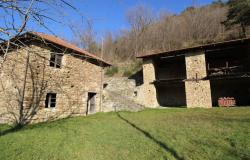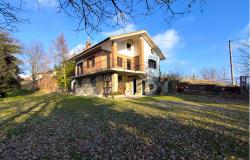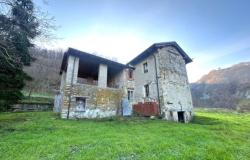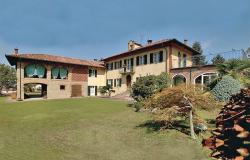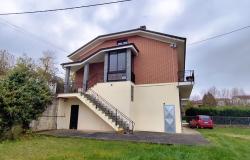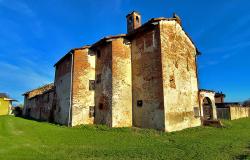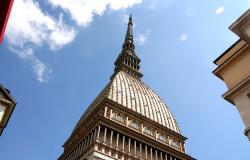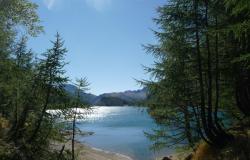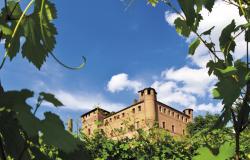Barolo and Barbaresco, two of the greatest and most famous names in Italian wines, are produced from a grape variety that is less well known in its own right, but which is nonetheless capable of greatness on a world-class scale, Nebbiolo. This temperamental and aristocratic grape variety thrives mainly in Piedmont, as well as in Lombardy’s Valtellina, yet appears virtually nowhere else in Italy.
The name Nebbiolo comes from ‘nebbia’, or fog, indicating a late-ripening variety that is traditionally harvested well into autumn and the season of mists. Nebbiolo is never an easy grape to grow, requiring sheltered, ideally south-facing slopes and with a preference for chalky, calcareous marl soils. Though its grape skin is not particularly dark or rich in colouring elements, nonetheless, Nebbiolo produces wines that are rich in acidity and tannin, and thus capable of ageing – and indeed improving – in the bottle for years and even decades.
The ability to be conserved for long periods has long been considered a prerequisite for great wines. The greatest Barolos and Barbarescos, certainly, are wines with tremendous longevity. Indeed, in the not too distant past such wines from the most traditional producers positively demanded being cellared for years and decades simply because they were too immense, too tannic to be drunk when young.
Today, more modern winemaking methods and techniques have resulted in wines that are more supple and approachable when still in their full flush of youth.
Alba, capital of Nebbiolo and Le Langhe
 Alba, one of the great wine towns of the world, could rightly claim to be the world capital of Nebbiolo. For this busy little market town, famous equally for the rare and precious tartufi bianchi – white truffles – that are found in its surrounding hills and woodlands, is the confluence for the prestigious wine zones of Barolo to the south, Barbaresco to the northeast and, across the Tanaro River, Roero to the north.
Alba, one of the great wine towns of the world, could rightly claim to be the world capital of Nebbiolo. For this busy little market town, famous equally for the rare and precious tartufi bianchi – white truffles – that are found in its surrounding hills and woodlands, is the confluence for the prestigious wine zones of Barolo to the south, Barbaresco to the northeast and, across the Tanaro River, Roero to the north.
This area is known as Le Langhe. It is undoubtedly here, in the wine hills which surround Alba, that Nebbiolo reaches its highest and most exalted expressions.
The delimited wine zone of Barolo is probably the most famous, consistently resulting in Nebbiolo wines that are at once outstanding, austere, well-structured and deeply perfumed. These are wines that are able to command fantastic prices on a world market that extends well beyond regional and national confines.
Barolo is simply a majestic wine from a majestic land. The wine zone extends over some eleven communities, mainly small hamlets and villages topped by castles that stare across at one another in stony silence over bare, sometimes white hills ringed with concentric circles of vines, vines everywhere, as far as the eye can see. For connoisseurs of Barolo, wine towns such as Barolo itself, Castiglione Falletto, La Morra, Serralunga d’Alba and Monforte d’Alba are places of pilgrimage, the great growths of a great wine zone.
Traditionally, Barolo has been a blended wine, with producers often utilising Nebbiolo grapes not from single vineyards but grown throughout the delimited wine zone to achieve a more balanced and harmonious result. In recent years, however, there has been a rise in the production of select single vineyard cru or vigneto wines, sometimes designated by the term ‘bricco’ (hilltop).
Indeed, such single vineyard Barolos from the best producers are amongst the most prized and highly sought, including cru wines from named vineyards such as Rocche and Brunate in La Morra, Cannubi in Barolo, Momprivato, Villero and Rocche in Castiglione Falletto, and many others.
The Barbaresco wine zone lies to the northeast of Alba, a smaller and more compact area extending over hills that are somewhat lower than in Barolo and with a lighter soil that results in Nebbiolo wines that are generally slightly less austere, perhaps more perfumed and elegant. But make no mistake, Barbaresco is no lightweight feminine cousin of Barolo: it is a serious and aristocratic red wine in its own right that is yet another fabulous expression of the Nebbiolo grape at its most exalted.
Producers such as Angelo Gaja have created a world demand for Barbaresco wines from select single vineyards that can compare in quality and price with the greatest and most prestigious wines from the Côte d’Or or Médoc. Indeed, Gaja’s wines have achieved a cult status and a world demand that is quite extraordinary and far beyond the reach of many of us.
Fortunately, there are other producers in the wine zone making great wines that are more accessible and affordable.
Still in Le Langhe, Nebbiolo wines are also produced in the Roero wine zone to the north of Alba. Far less well known than either Barolo or Barbaresco and thus still excellent value, Roero reds can nonetheless be wines of considerable stature, and have in recent years gained attention as well as awards. Additionally, outstanding Nebbiolo wines may be produced under less specific denominazioni such as Nebbiolo d’Alba or Nebbiolo delle Langhe.
Generally somewhat lighter than wines from Barolo or Barbaresco, at best such wines can nonetheless be elegant and pure expressions of Nebbiolo, demonstrating its unique character, structure and sometimes haunting perfumes.
Northern Piedmont and its Spanna wines
 The Nebbiolo wines of Alba and Le Langhe are so richly satisfying and prestigious that it is easy to overlook the vineyards and wine regions of Northern Piedmont. Yet, across both the provinces of Novara and Vercelli, on foothills that lead up to the snow-covered Alps to the north, Nebbiolo grapes thrive, though here mainly under the local name of Spanna.
The Nebbiolo wines of Alba and Le Langhe are so richly satisfying and prestigious that it is easy to overlook the vineyards and wine regions of Northern Piedmont. Yet, across both the provinces of Novara and Vercelli, on foothills that lead up to the snow-covered Alps to the north, Nebbiolo grapes thrive, though here mainly under the local name of Spanna.
Indeed, much generic varietal wine is produced and bottled under the Spanna label. These are often robust country wines that can be satisfying and which on the whole are excellent value. The best wines, however, are entitled to more select communal denominazioni. Names to look out for are Fara, Sizzano, Ghemme, Boca and Gattinara.
Meanwhile, north of Ivrea, leading up to the autonomous Valle d’Aosta, Nebbiolo changes name once again. Here the grape is known locally as Picutener and is the source of some ethereal and fragrant mountain wines such as Carema and Donnaz.
The Valtellina
Though a notoriously difficult and temperamental grape to cultivate, it seems that Nebbiolo thrives in conditions that are never less than challenging. High in the mountains of Lombardy, at altitudes of between 600-800 metres above sea level, Nebbiolo grapes ripen in a rarefied atmosphere, basking in alpine sun that can be surprisingly fierce and direct, to result in wines that may be light in colour yet which are nevertheless surprisingly full-bodied and finely perfumed.
Once again, the name of the grape changes with habitat. Here known as Chiavennasca, the Nebbiolo wines produced may be entitled to the general denominazioni Valtellina or Valtellina Superiore, while four historic sub-zones can be further indicated: Sassella, Grumello, Inferno and Valgella. One other wine should be mentioned, Sfursat (or Sforzato), a rare passito red made from semi-dried Nebbiolo grapes in the manner of Amarone della Valpolicella. This immense, rich, raisiny wine is a real alpine winter warmer!

